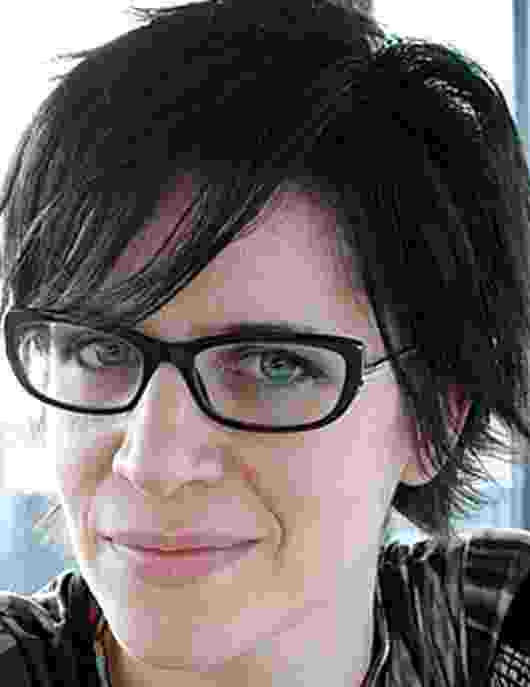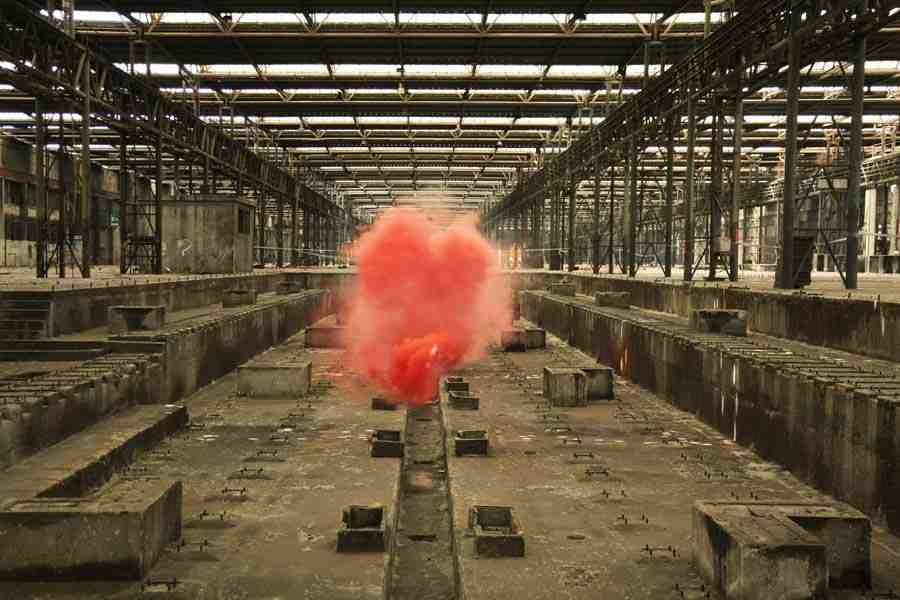santiago zabala's
WHY ONLY ART CAN SAVE US

reviewed by
SYLVIA MAZZINI
__________________________________________________________________
Silvia
Mazzini is Assistant Professor at the University of the Arts in
Berlin.
Despite
what its title might suggest, the aim of Santiago Zabala’s
most recent book, Why Only Art Can Save Us, is not aesthetic
but, rather, exquisitely political. Of course, even a cursory
look at the book’s index evinces a rigorously philosophical
outlook, and the body of the text itself is an aesthetic analysis
of twelve works by contemporary visual artists, supplemented by
an organic theoretical treatment developed in the first and third
part of the book. These elements, however, act as a hinge, thanks
to which one can open up, like a sudden lightning strike, a powerful
call to political reflection and political praxis: a call that
emerges not primarily from theory, but 'in' and 'from' the artworks
discussed—a call, as the author himself underlines, that
“we can no longer overlook if we care about our social,
urban, environmental, and historical salvation.”
Following
Heidegger, Zabala believes that, in the era of globalized capitalism,
every financial, cultural and political phenomenon is reduced
to an objective scale. Within such a system, then, only what falls
within and is framed by the parameters of realism and scientific
calculability is recognized as real, while all the rest is omitted,
hidden, not considered or left to the margins. Put otherwise:
because such a system claims for itself a monopoly of truth, proclaiming
itself unique and absolute, within it there is no space for difference
to emerge. In this sense, there is a “lack of emergency”
within it—and precisely this, Zabala emphasizes, is the
greatest emergency of all. Art (rather: a certain type of art)
is, however, capable not just to inform us of this emergency,
but also and especially to immerse us in it, to make us participate
in it, to position us in front of it—to “call into
question our comfortable existences” and enable us to respond
to it as an existential call. This point has deep implications
and great present-day relevance, which might be uncomfortable
(but is necessary nonetheless) for Marxists, post-Marxists, or
‘non-non-Marxists’ as Ernst Bloch put it.
Zabala
does not conceal the fact of being a partisan for what and who
is left to the margin, insofar as they do not correspond to the
image of the world imposed by the capitalist system. These margins
are, in philosophical terms, the ‘remains of being’
(a phrase that served as a title for his 2009 book). They represent
an alternative in which it is worth the risk to hope for and to
invest in an important albeit ‘weak’ alternative—actually,
one that is important precisely because it is weak (it is worth
remembering here that Zabala was and is one of the most brilliant
disciples of Gianni Vattimo, the founder of the so-called ‘weak
thought,’ now known with even greater political echoes as
‘the thought of the weak’).
Starting
from these presuppositions, Zabala, in the second chapter, analyzes
twelve works by visual artists who illustrate in a surprisingly
clear and striking way what the first, theoretical section adumbrates.
These works have no pretence to normativity and are not themselves
representative of what art is or should be. Zabala reminds us,
in fact, that even within the capitalist world there are artists
and artworks that are completely integrated into the dominant
system and reinforce its structures and ethical/aesthetic implications.
The twelve works were chosen instead because they are capable
of showing perfectly the kind of art that is capable of disclosing
the emergencies of the present-day and, in so doing, saving us
from them. But how?
 Through
photomontages showing the Twitter logo in an industrial turkey
farm, by way of imposing open-air sculptures made up of abandoned
plastic bottles that will never decompose, with wax figures of
Palestinian refugees accompanied by audio and video testimonials,
along with several other examples, the artists chosen show us
political, financial, and technological paradoxes that frame our
social lives, problems raised by urban slums, e-waste, or plastic,
the environmental emergencies or ignored histories. Kennard Phillipps,
Jota Castro, Filippo Minelli, Hema Upadhyay, Wang Zhiyuan, Peter
McFarlane, Nele Azvedo, Mandy Barker, Michael Sailstorfer, Kardy,
Alfredo Jaar, and Jane Frere come from the most disparate corners
of the earth and operate according to different styles and modalities,
but, for Zabala, their works have something precious in common:
they know how to present alterations in an incisive way.
Through
photomontages showing the Twitter logo in an industrial turkey
farm, by way of imposing open-air sculptures made up of abandoned
plastic bottles that will never decompose, with wax figures of
Palestinian refugees accompanied by audio and video testimonials,
along with several other examples, the artists chosen show us
political, financial, and technological paradoxes that frame our
social lives, problems raised by urban slums, e-waste, or plastic,
the environmental emergencies or ignored histories. Kennard Phillipps,
Jota Castro, Filippo Minelli, Hema Upadhyay, Wang Zhiyuan, Peter
McFarlane, Nele Azvedo, Mandy Barker, Michael Sailstorfer, Kardy,
Alfredo Jaar, and Jane Frere come from the most disparate corners
of the earth and operate according to different styles and modalities,
but, for Zabala, their works have something precious in common:
they know how to present alterations in an incisive way.
"These
alterations produce disruptions that require interpretations,
response, and intervention instead of contemplation.” Alterations
are a shock, a rupture, a leak. And it is precisely through these
leaks that the other, the different, has a way of entering into
contact with us. Alterations, in fact, break through the unitary
and seemingly inexpungible “picture of the world”
that capitalism advances, breaking this frame and showing the
justificatory insufficiency of purely scientific paradigms. All
this forces us in some way to find an explanation, to expand the
points of view that we formerly had to interpret this new event
and update our picture of the world. Here it is worth remembering
that this is an original and, at the same time, faithful elaboration
of the hermeneutic theory that, from Heidegger to Gadamer and
passing through Pareyson and Vattimo, upholds the ontological,
and not only literary, juridical, or religious, character of the
science of Hermes. For hermeneutic ontology, in fact, the encounter
with a book or a work of art, like the encounter with a person
or a landscape, is an experience, a journey (Er-fahrung)
that cannot leave us unchanged, but which brings a change in ourselves,
in our way of hearing and feeling things, in our Weltanschauung.
To encounter a work requires us to enter into dialogue with it,
to start a conversation, an exchange. But if, for Gadamer, this
operation brings forth a fusion of horizons, Zabala, following
Vattimo’s steps instead, underlines and defends the (productively)
disturbing character of the clash (Streit) of interpretations.
The aim, then, is not for everyone to think the same way, but
for everyone to exchange different opinions, to live with the
different, and put this difference to work. The exchange of different
interpretations proposes a model of anarchic truth—in which
anarchy, following Schürmann, is not understood as the absence
of rules, but the absence of a single, universal, and indisputable
rule. Interpretation is an anarchic action, then, insofar as it
can never aspire to absolute completeness, insofar as it is not
subjugated to the authority or the hegemony of a single interpretation.
The novelty
of Zabala’s emergency aesthetics resides in its locating
the salvific effect of the work of art in the horizon of an anarchic
theory of interpretations and, in particular, in the call that
the encounter with the work of art aims continuously at each one
of us. “The truth of art no longer rests in representations
of reality but rather in an existential project of transformation.”
Understood in these terms, interpretation is already an action
that adds vitality, and art is a constant mobilizing toward battle—even
and primarily a battle with ourselves, insofar as the shock produced
by works of art presupposes the casting into doubt of our truths,
of paradigms and ideas that first seemed certain, but which now
are no longer enough to ‘encounter’ what lies before
us. This does not imply that we have to abandon our political
positions, our choices or allegiances: what is asked of us is
rather to always consider the other, to fix our ideas and our
political praxis with each situation with which we are presented,
so as to avoid applying principles in an automatic way.
In other
words: even the early twentieth century avant-gardes, not to mention
Benjamin and other thinkers, have underlined the beneficial effect
of the shock produced by works of art. This small electric shock
awakes us from our slumber and makes us feel like we are on the
right side (we should admit once in a while, don’t leftists
always feel like we’re in the right?), stimulates in us
debates over and re-visions of the frames with which we interpret
the world, thus opening up a new world, a new way of seeing the
world, a general reconsideration of our way of standing in it.
This new way is an “adventure of difference” (Vattimo),
a coming-into-relation that is always renewed with tradition,
in continuously enriched contact from interpretations with and
of others.
The aesthetics
of emergency, then, has nothing in common with state of emergency
theories like those of Schmidt or Agamben and, in fact, contra
Agamben, Zabala does not set forth a theory of positive passivity,
or a present absence from the world. In fact, radical instability
leads to a complete and even existential immersion in present-day
emergencies. “We cannot simply observe, describe, and understand
emergencies without being part of them.” In this sense,
we participate in emergencies, we all become the emergency. This
participation often brings with it an aesthetic praxis of participation,
as we have had the chance to notice in the most varied artists,
from Tino Sehgal to community theater to urban gardens, in which
the public (the word is not an accident, but alludes to the etymological
and politic roots of the res publica) is the engine and
actor of the artistic event. All of this is celebrated with great
interest by Zabala, but it is not the central aim of this aesthetics
of emergency. Zabala casts his focus on the existential claims
of art, which call into question our “comfortable existences,”
reminds us to always be open to revision and enables us to respond
with political praxis. It has to do with a warning of great importance,
which is democratically addressed to everyone and in equal measure:
yes, even to whoever seeks to rebel against the political and
financial framework of capitalism, to engage with struggle for
the environment, to bring a voice to the voiceless. Today’s
capitalism, in fact, as Hardt and Negri observe, is capable of
appropriating the different or, in Zabala’s terms, of normalizing
it and reintegrating it into its system, thus neutralizing emergencies.
The large corporations dedicated to developing organic products
to increase its sales (even McDonald’s sells organic”
products); the adoption of political correctness by Wall Street
bankers, countries’ displays of shame and remorse for past
genocides, all these show us how everyone—even us—has
to put into doubt his or her Weltanschauung, to find
new horizons, to open new tears to allow for emergencies to puncture
the dominant “picture of the world” and to give space,
anarchically, to what is always new and different each time.